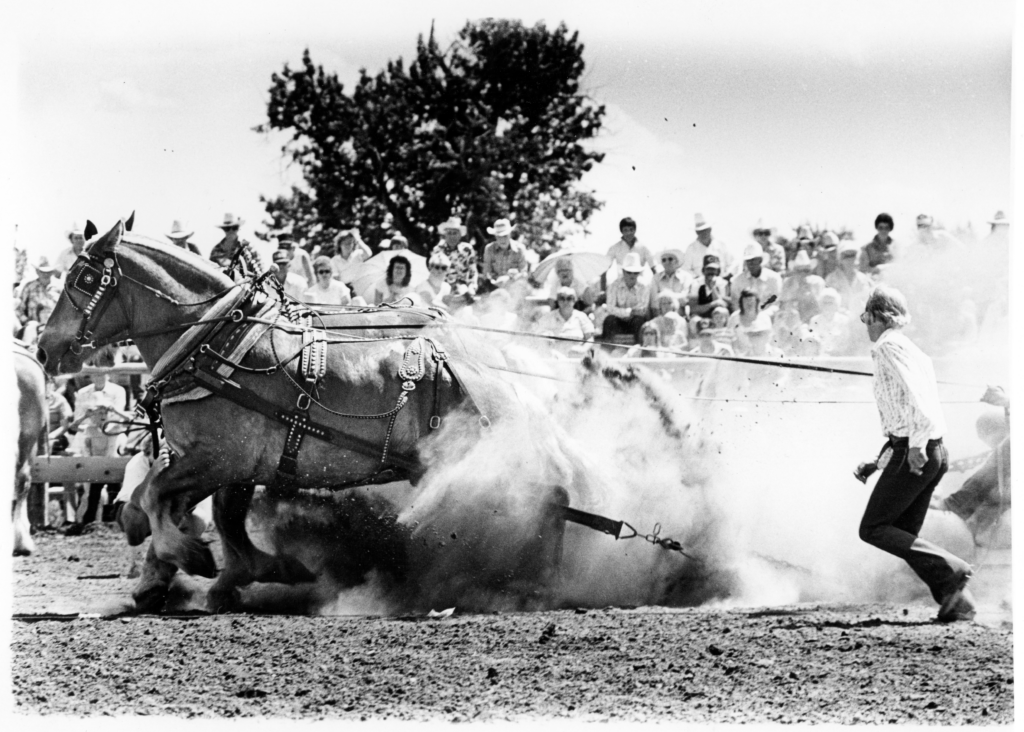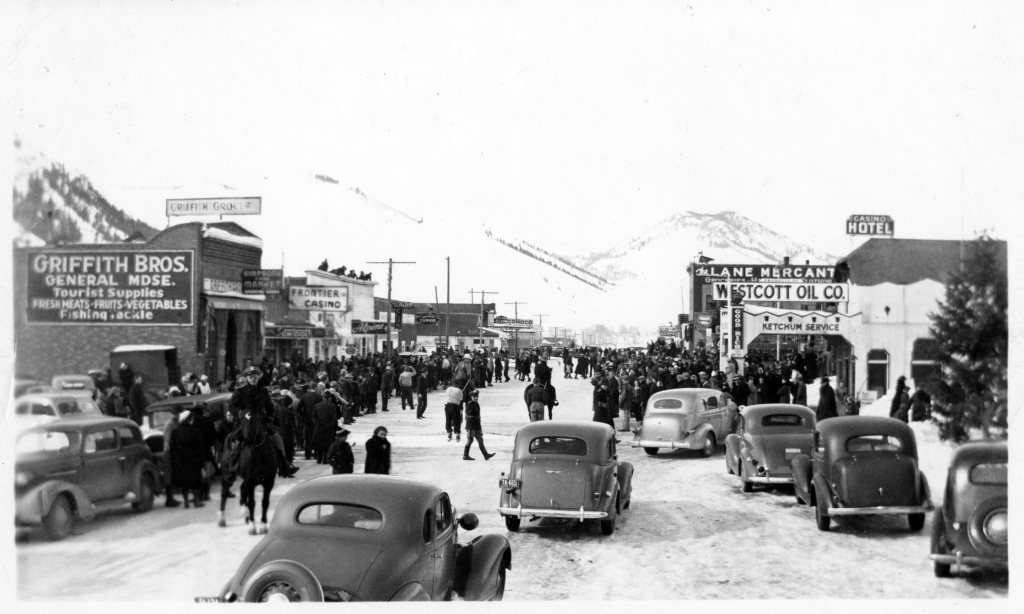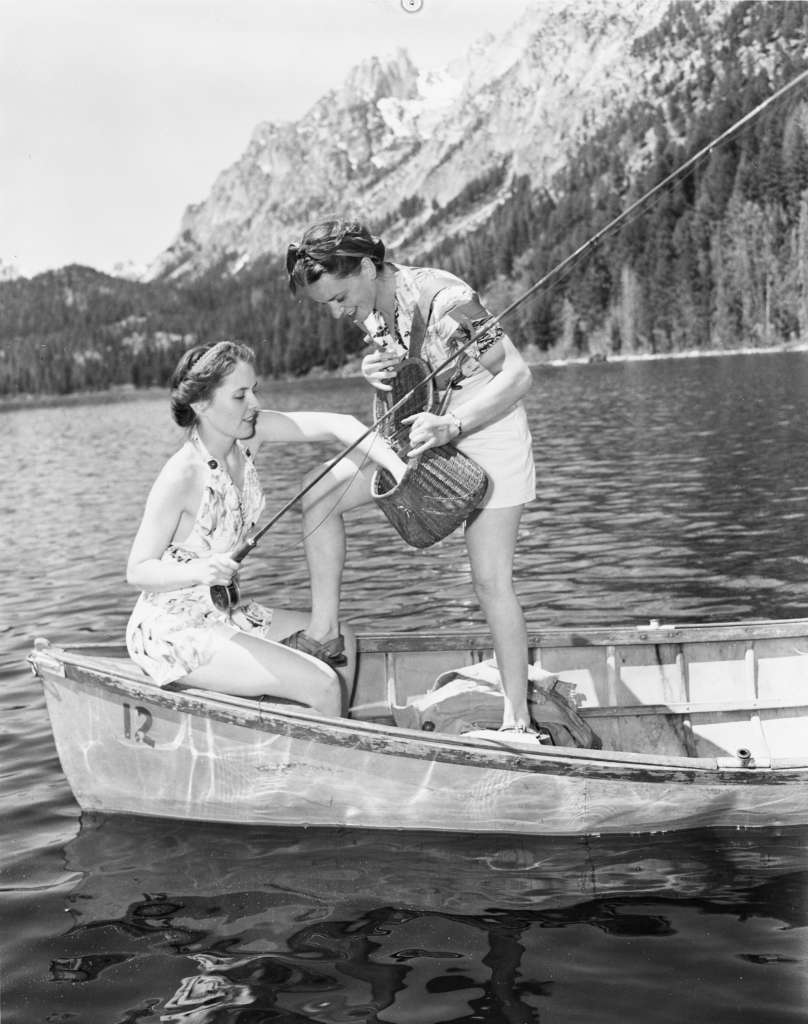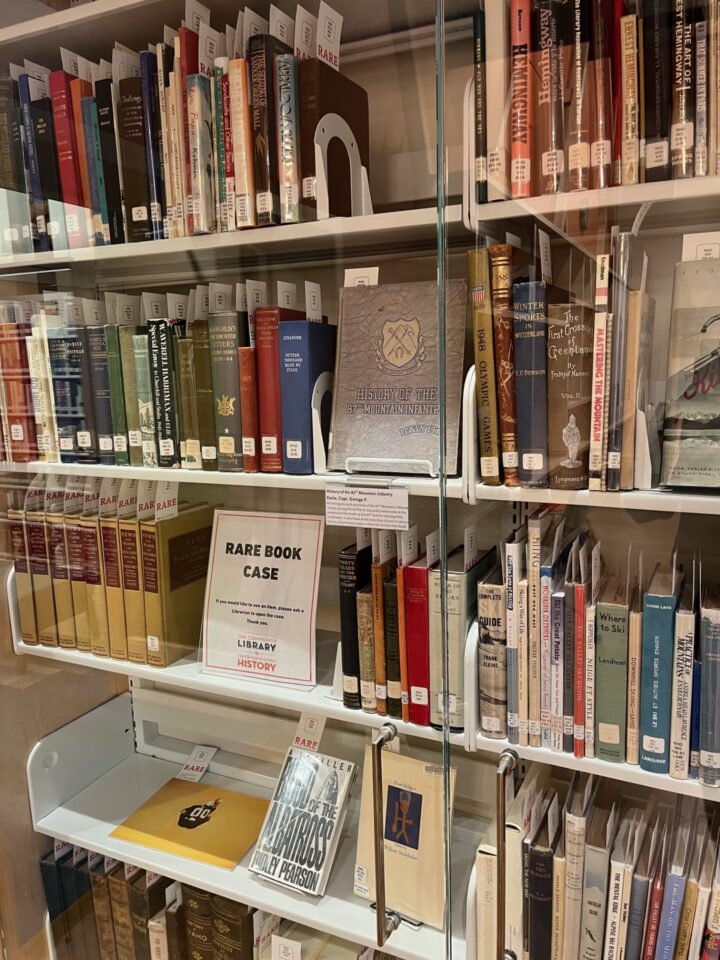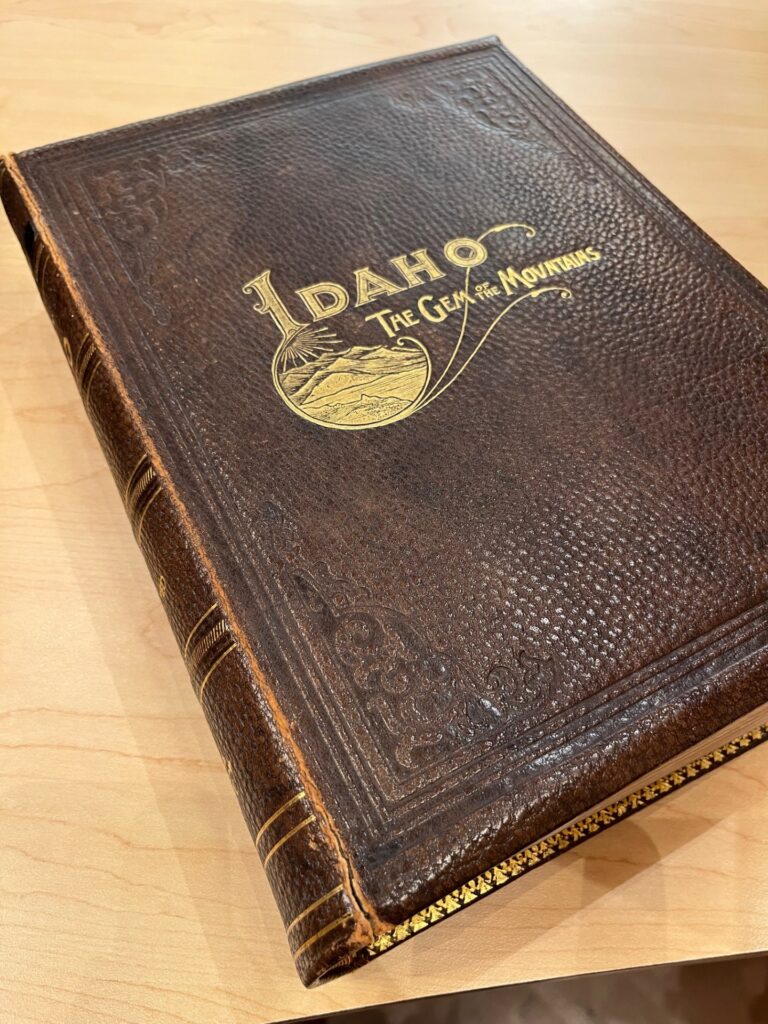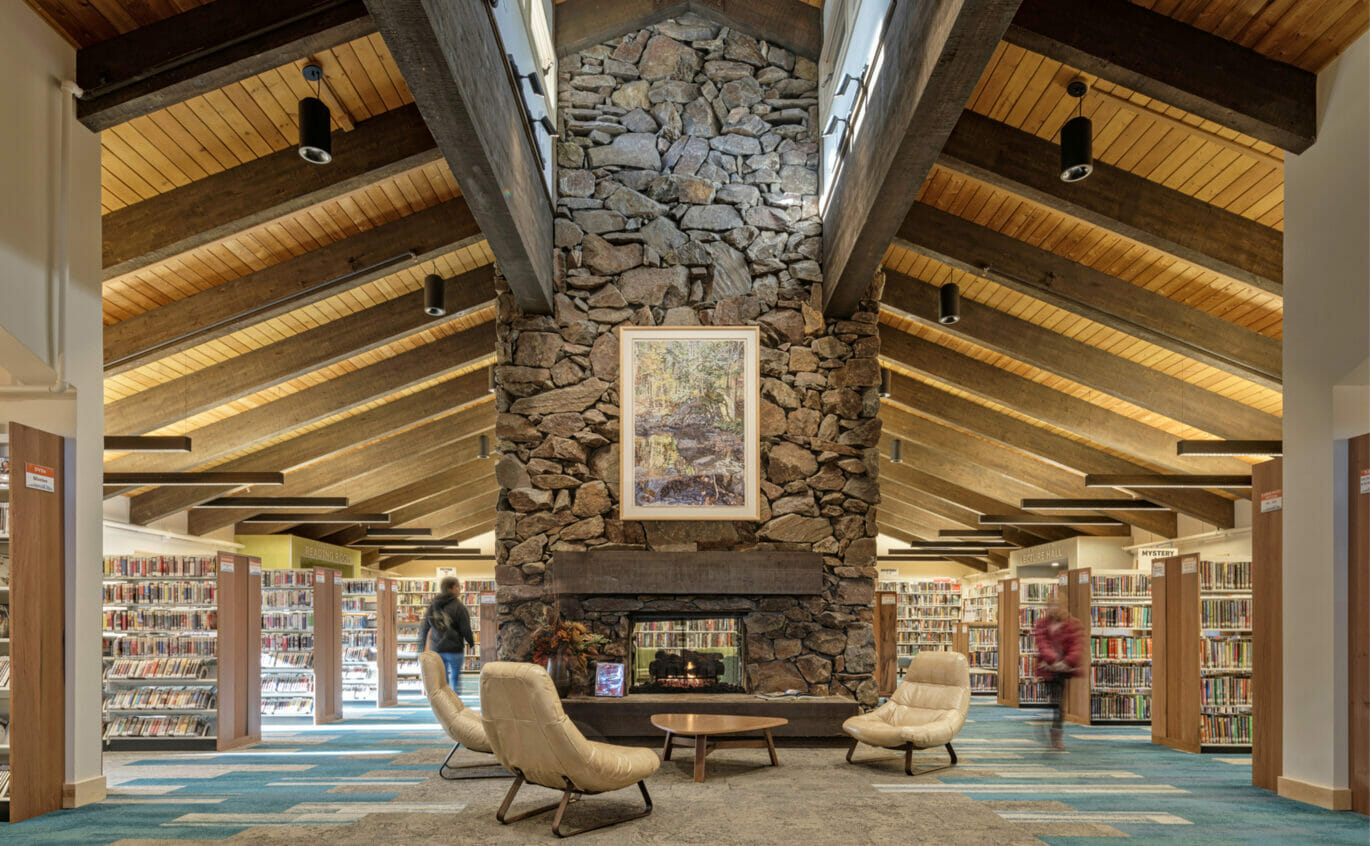Carolina Estrella, Trailing of the Sheep Festival Archives Intern
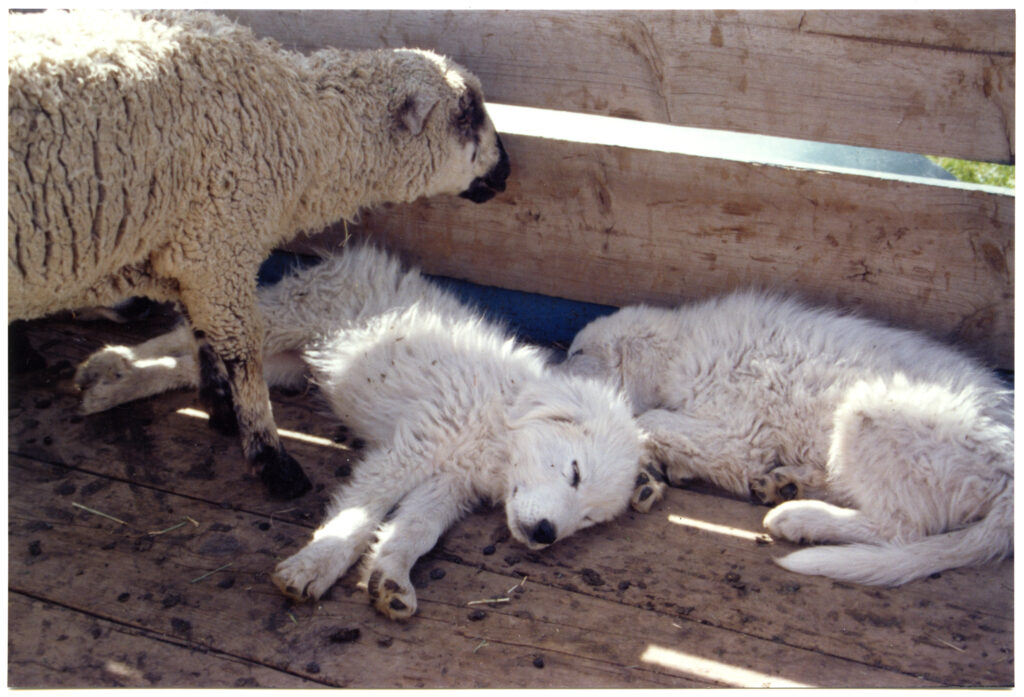
A vigilant sheep stands guard over two Great Pyrenees puppies snoozing away in the shade. It doesn’t seem apparent at this stage of their lives but in a few years those same pups will mature into their sheep’s first line of defense. For generations, Idaho sheep ranchers have used this special dog breed to keep their herds safe from predators. A fully grown Great Pyrenees can hold its own against coyotes, mountain lions, bears, and sometimes even wolves. Herders will have several of these dogs accompany their flocks. Day and night, these guard dogs stay close by their sheep, always alert for any potential danger. They drink, eat, and sleep with the wooly animals in their care.
In order for these dogs to efficiently carry out their responsibility to the herds, puppies are socialized with the sheep bands from an early age. They have to become comfortable around the other species and bond with its members in order to develop a protective instinct towards them. As adults, the dogs will even risk their own lives to make sure their sheep come to no harm.
This photograph was taken in 1998, not long after the Trailing of the Sheep Festival was founded. In that time, sheep trailing down the mountains along the bike path were deemed a nuisance by some as the animals’ droppings were being left behind and reportedly getting stuck in people’s bicycle spokes. Now, however, the perception of sheep ranching in the area has experienced a positive revival through the festival’s efforts. The loyal Great Pyrenees are just one factor in many which make sheep ranching possible right here in Idaho and all across the American West.
Note this story was originally published in October of 2024 in the Idaho Mountain Express.
